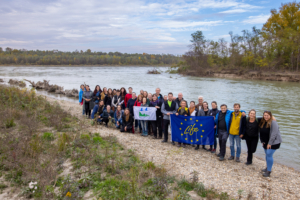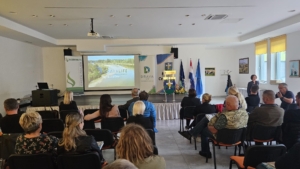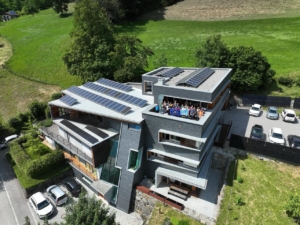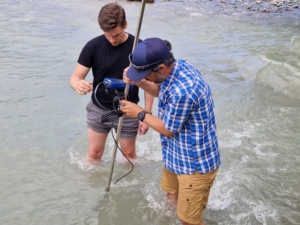A 5,714-meter-long DRAVA LIFE Educational trail opened at the Dravska priča Visitor Center
/in Nekategorizirano /by Iva Naglić Dolić
Tatjana Arnold Sabo
Noskovci, November 27, 2024 – A gathering at the Dravska Priča Visitor Center marked the official opening of the DRAVA LIFE Educational Trail, the final activity of the project focused on the revitalization of the Drava River and the preservation of its ecosystems.
The DRAVA LIFE Educational Trail stretches 5,714 meters and features 25 info-educational boards, bringing visitors closer to the values of protected areas, flora, and fauna of the Drava River. The trail also includes two newly constructed birdwatching hides, providing a unique opportunity to enjoy nature and observe birds.
During the event, Tatjana Arnold Sabo, Director of the Public Institution for Managing Protected Natural Areas and the Ecological Network of Virovitica-Podravina County, stated: “The DRAVA LIFE Educational Trail is the crowning achievement of our efforts to preserve the natural heritage of the Drava River through this project, which has created a space for education, recreation, and enjoyment in nature for all generations.”

Photo Iva Naglić Dolić
As part of the project, a bio-research station at the Dravska Priča Visitor Center was additionally equipped in 2017, enhancing research and educational activities. The Public Institution oversees the protection, presentation, and promotion of 16 protected areas and the ecological network in the Virovitica-Podravina County. The Drava River is the most significant protected area in the county. The institution works hard to raise awareness among the local population about the importance of preserving ecosystems, emphasizing the benefits of protected areas for quality of life and their sustainable economic and tourism potential.
Since its inception in 2015, the project, which ends on November 30 this year, has carried out numerous activities across six restoration sites in three counties: Koprivnica-Križevci, Varaždin, and Virovitica-Podravina. These include river restoration, flood risk reduction, and strengthening recreational potential for local residents.
Jasmin Sadiković, project coordinator from the Green Osijek Nature and Environment Protection Association, highlighted: “An extremely important set of project activities relates to educating students and local residents. Therefore, I am particularly pleased that with the opening of the Educational Trail, we symbolically close the project, even though work on the restoration of the Drava River continues. Through educational activities, we aim to increase local awareness about the importance of natural and preserved rivers and improve their knowledge of the Natura 2000 network, especially concerning protected river birds.”

Photo Kristijan Toplak
Igor Tošić, project leader from Croatian Waters, reflected on the planned restoration of the Drava sidesidearm Miholjački Martinci (C.6),” located near Čađavica in Virovitica-Podravina County: “The project involves the right side-arm of the Drava River, spanning 2,500 meters in total. Planned restoration includes the removal of an existing barrier, bioengineering for bank stabilization, and the creation of nesting conditions for protected species such as kingfishers and sand martins. These interventions will stimulate dynamic processes and ensure water flow through the side-arm for most of the year.”

Photo Kristijan Toplak
To ensure protection for future generations, the DRAVA LIFE project area has become part of the world’s first Five-Country UNESCO Biosphere Reserve Mura-Drava-Danube (MDD). This project covers areas in Austria, Slovenia, Croatia, Hungary, and Serbia, making the Drava part of the global network of the most renowned natural areas.
Lisa Wolf from WWF Austria emphasized: “The DRAVA LIFE project was a pioneering step for future river restoration projects in the region. The dedication of participants and collaborators has led to the implementation of another major EU project, now spanning five countries: the LIFE RESTORE for MDD project. The restoration of the Drava River benefits both nature and people in the region, serving as a green and blue safety net.”
As part of the program, the film “DRAVA LIFE – A New Life for the Drava” was also presented.


 Alen Međić
Alen Međić



 Nikolina Stjepanović
Nikolina Stjepanović

































